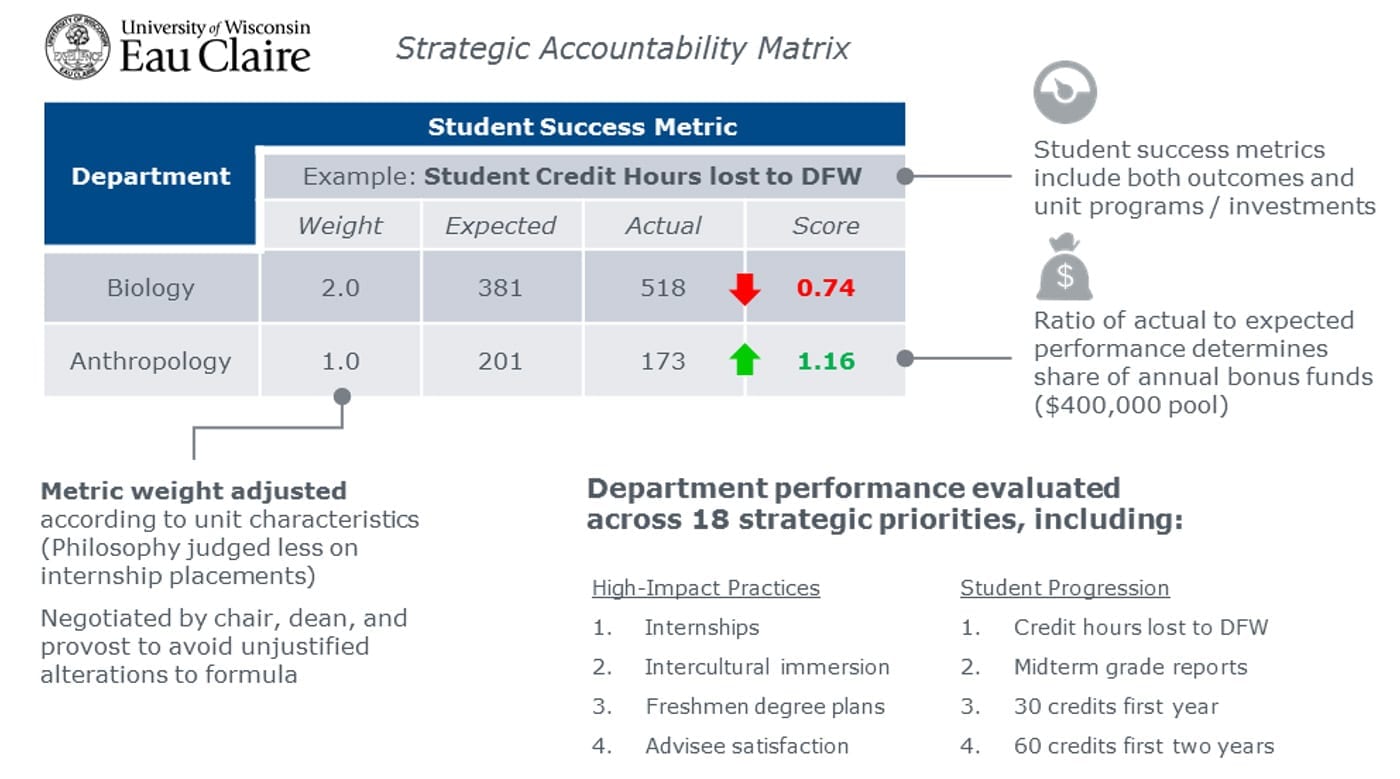As student success becomes an increasingly pressing imperative, one of the greatest challenges facing universities is how to instill localized accountability for institution-wide performance metrics. These high-level student success goals can paralyze faculty and staff, who lack clarity on how their individual decisions can inflect large-scale patterns of student behavior. How can academic leaders evaluate every unit on actionable goals, and help them track their progress toward strategic imperatives?
Evaluate departments on concrete, specific metrics
The University of Wisconsin-Eau Claire developed an innovative solution to this challenge. Its Strategic Accountability Matrix, or SAM, provides faculty with incentives outside of the promotion and tenure process and aligns unit-level metrics to individual faculty behaviors.
Read the full study on the faculty’s role in student success
SAM measures each of UW-Eau Claire’s 40+ academic departments on a range of 18 metrics, such as internship placement and credit hours lost to DFW (D/F grades and withdrawals), that are highly specific, concrete, and actionable. The clarity helps individual faculty members to understand their role in inflecting each metric. The scores across all measures determine each department’s share of a $400,000 central fund, which provides much-needed discretionary dollars in a challenging state budget climate.

With approval from their dean and the provost, departments can ask that individual measures be weighted differently to account for significant differences in mission or enrollment between departments. Philosophy, for example, might have a lower standard on internship placements, while mathematics might have a higher standard on improving first-year success.
Clear expectations lead to improved student success measures
SAM’s ongoing use at UW-Eau Claire has led to significant improvement among academic departments on almost every measure. Some departments, for example, rethought their approach to teaching introductory courses and course sequencing after noticing poor performance among at-risk first-year students. Others invested additional faculty and staff time to ensure that students file degree plans with their advisors.
Infographic: 6 roles for faculty in student success
When SAM measured faculty midterm grade reporting for the first time in 2015, compliance rates increased dramatically across the institution—80% of faculty submitted grades, up from 20% the previous year.
Clearly, articulating specific, expected outcomes and sharing progress in a public forum has played a significant role in enfranchising faculty in student success. Looking forward, UW-Eau Claire plans to transform its static SAM database into a live dashboard so that faculty can track their progress at any time.
More broadly, institutional leaders report that this process has impacted the academic culture on campus. For the first time, individual faculty members and departments can clearly see how their efforts, from advising and mentoring students to engaging them in co-curricular experiences, ultimately add up to substantial institutional improvement.
Recognizing their unique role in determining that success has led to true, grassroots innovation among faculty—and that is sure to outlast any top-down changes or initiatives.